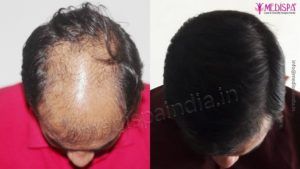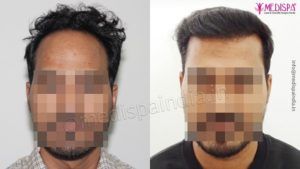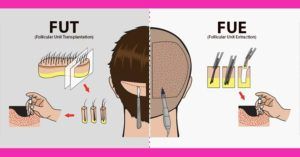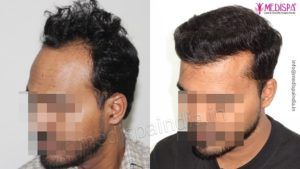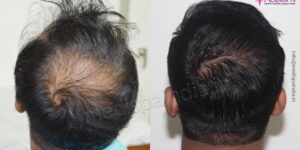
We all know that hair transplants are frequently available these days in practically all of India’s major cities. The industry of hair transplant in India has experienced rapid growing and at a competitive price. This has been made feasible by the establishment of reputable clinics with top-notch infrastructure and highly regarded surgeons working in the nation, particularly in the two major cities of Jaipur and New Delhi. The improved treatment quality has also greatly reduced the hair transplant cost in India.
The fact that Dr. Suneet Soni (MCh, MS, MBBS), Medispa’s owner, director, and in-house surgeon, consistently produces exceptional outcomes makes Medispa, a hair transplant clinic with locations in New Delhi and Jaipur, one of the best in the world. The fact that he can do the process with such exquisite precision has earned him a great deal of notoriety in the hair transplant community. According to Dr. Suneet Soni, who has a vast worldwide network and expertise and has been successfully raising the benchmark of quality of results in India, Medispa Hair Transplant Clinic is a leader when it comes to swift adoption of emerging technologies or techniques in this sector.
Throughout his more than 17 years of experience, he has successfully completed more than 10,000 hair transplants and has won numerous accolades for his contributions to this field.
The majority of people search for information on hair transplant techniques because this is still the most important stage in choosing a hair transplant treatment. The fundamental process of hair transplantation, which is the transfer of hair follicles from one area of your body (the donor area) to another, is the same across all treatments (recipient area). FUE and FUT hair transplant techniques are two of the methods that can be used.
- Strip harvesting or FUT (follicular unit transplantation) technique: The process of strip harvesting entails the removal of a small strip from the donor areas, which is then taken to the graft separation chamber where individual hair grafts are separated. The selected bald spot is gently covered with the collected individual hair graft. The “trichophytic closure” advanced technique is then used to gently stitch back the donor region. This method of closure heals the donor site with scarring that is essentially undetectable.
- FUE (Follicular unit extraction) technique: By pulling the hair grafts by assuming the direction of the hair root and punching the surgical tool accordingly to extract each individual hair root, the FUE hair transplant process entails removing the hair follicles from the donor area. The target bald area is selected, and these hair roots are subsequently transplanted there. In order to reduce or avoid scarring, each hair graft is taken from a longer distance apart.
FUT versus FUE hair transplant technique
- Procedure comparison: With a FUT hair transplant, a thin strip is harvested, and each individual hair graft is then divided for transplantation. On the other hand, a FUE hair transplant involves taking individual hair follicles from the scalp and directly implanting them.
- Harvesting count: From a smaller region, FUT hair transplant delivers a higher yield of about 3000–3500 hair grafts. In contrast, the FUE hair transplant requires the removal of between 2000 and 2500 hair grafts.
- Indications: FUE hair transplant is indicated in facial hair transplant and early hair loss instances, while FUT hair transplant is indicated in extreme hair loss cases or in high density hair transplant due to a higher yield of hair grafts.
- Cost: Due to the careful and time-consuming nature of the FUE process, FUE hair transplant is typically more expensive than FUT hair transplant at most clinics.
- Scarring: These methods can be used with minor, nearly undetectable scarring. Advanced techniques for FUT hair transplants can produce results with almost undetectable linear scarring that is easily concealed by existing hair. For instance, the hair graft can be removed using the FUE process, leaving behind a nearly undetectable circular scar.
- Shaving: In the FUT hair transplant process, shaving can be avoided or done just minimally, while it is necessary for FUE hair transplants.
- Damage rate: Because each hair follicle is harvested separately under strong magnification, FUT hair transplant is a safe procedure. On the other hand, because the FUE hair transplant procedure involves assuming the direction of the hair root and inserting the punch device accordingly, it is more likely to damage the hair transplants.
- Time required: FUE hair transplants take less time overall than FUT hair transplants. The first technique takes between 4 and 6 hours, while the second technique needs between 5 and 8 hours.
Which hair transplant technique is best for your hair transplant?
Each hair transplant technique should ideally be chosen in accordance with its recommendations, since this will guarantee the best results. No technique can be advised in every patient in the same way, however. While selecting the hair transplant technique and many other factors that are necessary for the procedure’s success, a holistic approach is essential.
The patient’s age, sex, the type and number of hair grafts used, the degree of baldness, and the necessity for hair density at the transplantation site are all taken into consideration when selecting a hair transplant technique.

